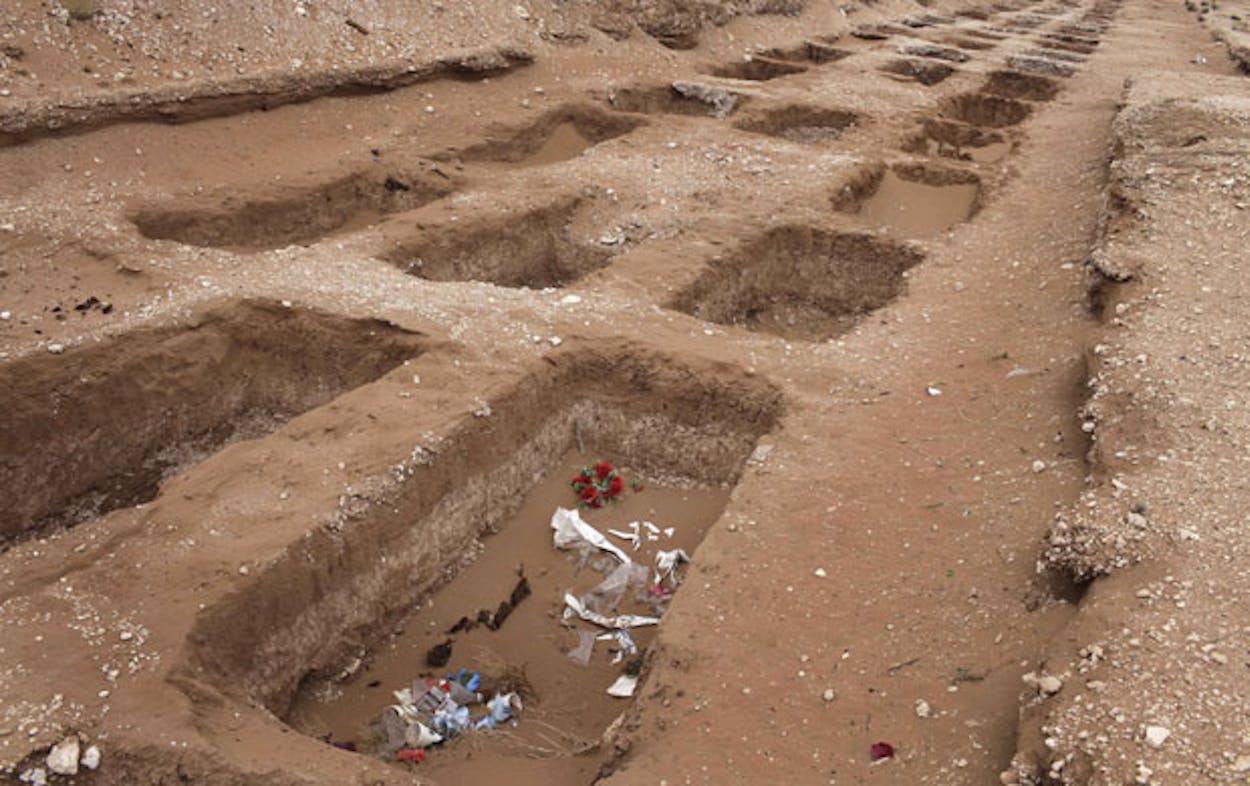Juárez has no dearth of deaths related to the drug war. But graves are in short supply.
Alejandro Martínez-Cabrera of the El Paso Times reported that eight people a day are buried in the San Rafael municipal cemetery (pictured above in 2009) near the outskirts of Juárez. Only some 10,560 burial spaces remain at the graveyard, which means that it could fill up in three years and seven months if the murder rate holds steady.
“It is nearing capacity sooner than city officials expected due to the high number of deaths during the last four years of drug-related violence,” Martínez-Cabrera wrote. (Juárez’s murder rate has dipped recently: the number of burials used to reach ten to twelve a day. And followers of the TM Daily Post might remember that the declining murder rate led the El Paso Times to report on a funeral parlor in the city, which had seen its business drop from twelve to fifteen services per day to one or two a week.)
A total of 85,509 adults and 11,730 juveniles are currently interred at the 222-acre cemetery, which opened in 1995, Martínez-Cabrera reported. (See a slideshow of the graveyard.)
“When the wave of violence started we didn’t expect the demand to raise so much. We were expecting to have space for a certain amount of years,” said Edgar Natividad, the official charged with overseeing the city’s cemeteries.
What’s the solution for this shortage? Dedicate another plot of land to a new graveyard and build a “dedicated space” (a shelf, really) to store cremated remains.
Juárez’s two other cemeteries—the Chaveña and Colinas cemeteries—are smaller and were mostly filled before the uptick in drug violence. Both are only open to take relatives of those already buried there, according to Martínez-Cabrera.
In late April, the bodies of four slain twentysomethings were found inside the San Rafael cemetery.







